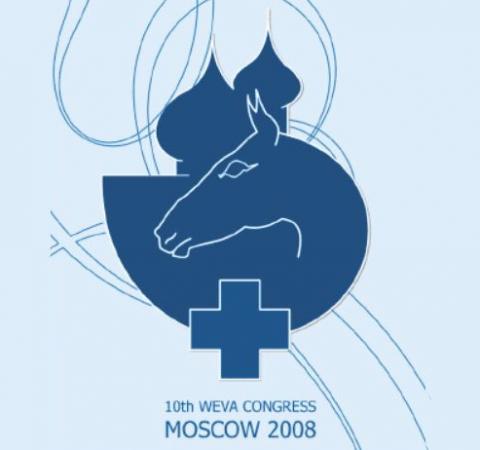Add to My Library
Would you like to add this to your library?
Get access to all handy features included in the IVIS website
- Get unlimited access to books, proceedings and journals.
- Get access to a global catalogue of meetings, on-site and online courses, webinars and educational videos.
- Bookmark your favorite articles in My Library for future reading.
- Save future meetings and courses in My Calendar and My e-Learning.
- Ask authors questions and read what others have to say.
Pneumonia and Pleurisy in Adult Horses
Author(s):
Updated:
FEB 01, 2008
Languages:
Add to My Library
Would you like to add this to your library?
Get access to all handy features included in the IVIS website
- Get unlimited access to books, proceedings and journals.
- Get access to a global catalogue of meetings, on-site and online courses, webinars and educational videos.
- Bookmark your favorite articles in My Library for future reading.
- Save future meetings and courses in My Calendar and My e-Learning.
- Ask authors questions and read what others have to say.
Read
Pleura: structure and function
- visceral and parietal layers
- single layer of mesothelial squamous cells
- overlie loose connective, and adipose tissue • Incomplete mediastinum
- 80% of horses
- fenestrated in caudal ventral portion
Identification of pleural effusion
Clinical Signs
- small amount of fluid
- respiratory signs may be absent
- several liters of fluid
- may be dyspneic at rest, or following slight exertion
- ventral dullness on ausculation and percussion
Laboratory analysis
- differentiate transudate/exudate
- identify neoplastic cells
Differential diagnosis of pleural effusion
- Pleuropneumonia
- Haemothorax
- Neoplasia particularly cranial mediastinal lymphosarcoma
- Right-sided heart failure
- Pericarditis
PLEUROPNEUMONIA
Definition: inflammation of the mesothelial lining of pleural cavity with associated parenchymal disease due to bacterial infection
Pathogenesis
- Mixed bacterial infection
- Organisms are often that are normal flora of the pharynx: Beta-haemolytic
Streptococcus, E coli, Klebsiella spp. Pasteurella spp., Bordatella spp., Bacteroides spp, anaerobes
- Organisms are often that are normal flora of the pharynx: Beta-haemolytic
- Suppression of pulmonary defense mechanisms
-
Often follows recent stressful event
- Prolonged shipping
- High performance
- Commingling with other horses
- Occult or patent respiratory infection
- Thoracic trauma
- Surgery and general anaesthesia. [...]
Add to My Library
Would you like to add this to your library?
Get access to all handy features included in the IVIS website
- Get unlimited access to books, proceedings and journals.
- Get access to a global catalogue of meetings, on-site and online courses, webinars and educational videos.
- Bookmark your favorite articles in My Library for future reading.
- Save future meetings and courses in My Calendar and My e-Learning.
- Ask authors questions and read what others have to say.
About
How to reference this publication (Harvard system)?
Marr, C. (2008) “Pneumonia and Pleurisy in Adult Horses”, WEVA - International Congress - Russia, 2008. Available at: https://www.ivis.org/library/weva/weva-internal-congress-russia-2008/pneumonia-and-pleurisy-adult-horses (Accessed: 17 June 2024).
Author(s)
Copyright Statement
© All text and images in this publication are copyright protected and cannot be reproduced or copied in any way.Related Content
Readers also viewed these publications
Provided by:




Comments (0)
Ask the author
0 comments